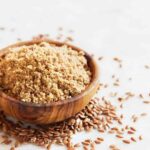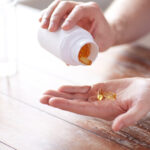Beet Kvass
I recently taught you how to make Rejuvelac. If, like me, you're looking to increase lacto-fermented, probiotic foods in your diet, I've got another idea for you. (Try to get at least two cultured foods in your diet every day! This is Step 8 of 12 Steps to Whole Foods.)
Have you ever heard of Beet Kvass? I recently had some when a vendor wanting me to sell his stuff mailed me samples. It's too expensive to buy on the internet and ship, but I loved it. I'm going to plant even MORE beets next spring. I have lots of jars of cultured beets in my food storage, but now I'm making them into a probiotic drink. I remember how shocked I was to learn that you could "put up" raw vegetables that "keep" for long periods of time, using lacto-fermentation. Now it seems common and easy, a "lost art" that people have done in virtually every culture of the world for thousands of years.
One of my employees, Melinda, saw a pile of beets from my garden the other day and said, "I love how beets look!" Kristin just saw this photo on my computer and made the same comment. I love the look too! They're so ruby-red! That juice staining your hands is potent pigmentation with high levels of carotenoid and other antioxidants that protect your eyes, normalize blood pressure, and cleanse your blood and your liver.
If beets make your urine pink, please read more detail about that in Chapter 5 of my 12 Steps to Whole Foods manual.
Cultured Beets/Beet Kvass
Ingredients
- 2-3 large beets
- 1/4 cup whey (the clear yellow liquid separated from the milk solids in yogurt or kefir), or 1 package Vegetable Culture from Body Ecology, or double the salt and refrigerate for longer to cut the saltiness.
- 2 tsp Original Crystal Himalayan salt
- 2 quart jars
- water
Directions
- Peel and chop beets in 2" pieces, then place chunks in glass jars.
- Add salt and whey/Vegetable Culture with enough filtered water to fill the rest of the container, leaving 1" headroom.
- Stir well, cover, and let sit at room temperature for 3-5 days.
- Put jars in fridge or cold storage. They will keep there indefinitely (I have kept my cultured beets for 2 years in cold storage, which is not nearly as cool as refrigeration).
- Remove from fridge and blend in high-speed blender (with extra water if you prefer it to be thinner).
Enjoy chilled as a drink, mixed with a little bit of fresh lime juice or freshly ground pepper. You can use kvass in recipes to replace vinegar.
Drink in small quantities with meals to facilitate digestion and build up healthy colonies of good bacteria in your gut. You can drink 8 oz. if you are used to probiotic foods and have a healthy diet. If not, start with just a few ounces and work your way up.
Thanks to reader Christy White for suggesting I write about beet kvass. Christy is a fan of Kristen Bowen's site Living the Good Life Naturally. Kristen recently wrote about beet kvass, and I have incorporated some of her ideas.

Disclosure: This post may contain affiliate links that help support the GSG mission without costing you extra. I recommend only companies and products that I use myself.
Posted in: Recipes, Whole Food














